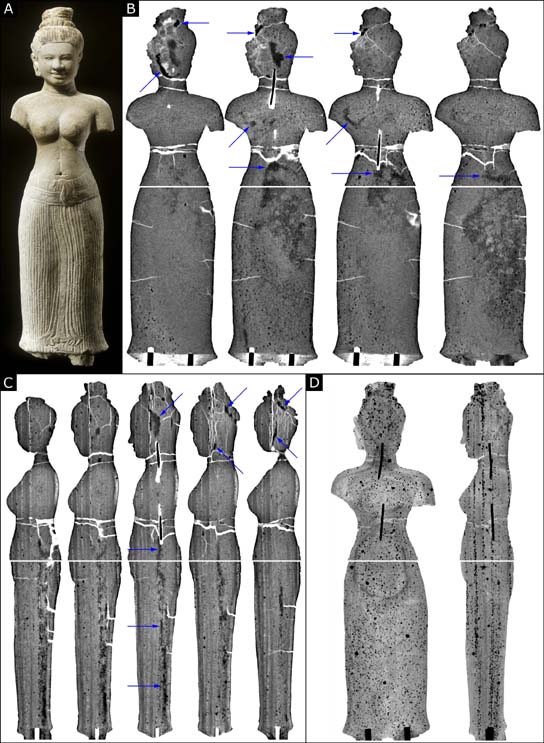previous image | main article | next image
CT Scans in Art Work Appraisal
|
A.
Khmer goddess in Banteay Srei style, Cambodia, second half of the 10th
century. Sandstone, 63 cm. B. CT: four thin frontal sections. They reveal the repair of breaks at the neck and waist by means of two metal rods sealed with cement in central drill holes. The dark patches are due to resin (arrows) injected into the cracks in a friable rock to ensure better conservation. The horizontal white line represents the border between the CT scans of the upper and lower parts of the statue (idem for the following figures). C. CT: five thin lateral sections, which confirm the sedimentary nature of this ferruginous sandstone, as the geological strata of varying density are oriented vertically. The black dots correspond to iron oxide nodules. Despite the breaks at the neck and waist, the continuity of the strata in the three fragments of sandstone glued together proves that the original statue was made from a single piece of stone. These sections also show the areas of injected resin (arrows) and the cracks in the rock which show up as irregular white lines in the head. D. CT: frontal and lateral 3D views. The sandstone has been rendered translucent. In the frontal view, apart from the metal rods, the iron oxide nodules seem to be scattered at random. In the lateral view, the sedimentary nature of the rock and the monolithic character of the sculpture are confirmed because this time the nodules are aligned in the geological strata. Detail:
larger photo view |
